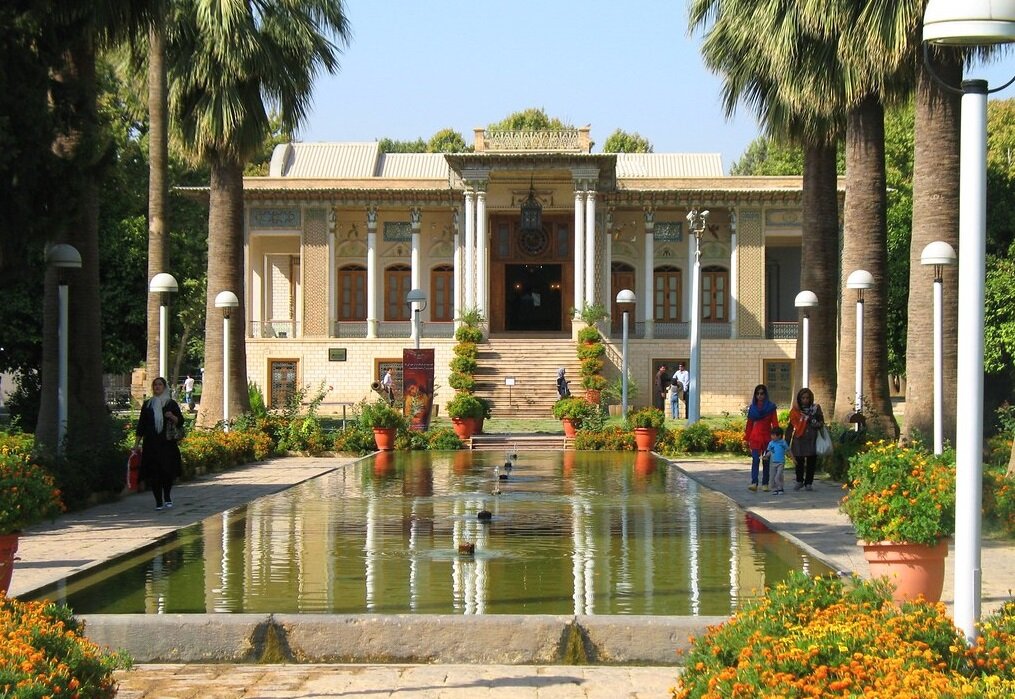TEHRAN - With its delicate Persian architecture, breathtaking landscapes, and rich cultural heritage, the Afif-Abad Garden in Shiraz has enchanted visitors for centuries.
Whether you are an avid explorer, cultural heritage enthusiast, or simply seeking tranquility in nature, that historical garden promises an unforgettable experience.
Covering an area of 127,000 square meters, the property features rows of rose bushes and seasonal flowers surrounding a historic residence. In addition, it has a museum of old guns, swords, and other weapons.
The garden is situated in an affluent quarter of Shiraz and on a street with the same name. Steeped in history and culture, the garden has witnessed the rise and fall of various dynasties, making it a must-visit destination for history buffs.
The mesmerizing architectural design of the Afif-Abad Garden is a testament to the artistic mastery of Persian culture. As you explore the garden, you may be impressed by the grandeur of its intricate gate, magnificent fountains, and beautifully adorned pavilions. The central mansion, with its elegant brickwork and stained-glass windows, shows the charm of a bygone era. Walking through the lush green pathways, you'll feel as though you've stepped into a fairy tale.
Whether you are an avid explorer, a history enthusiast, or simply seeking tranquility in nature, that historical garden promises an unforgettable experience.Nature enthusiasts will find comfort amidst the meticulously manicured landscapes of Afif-Abad Garden. Towering cypress trees, blooming roses, and vibrant seasonal flowers create a mesmerizing visual tapestry. Strolling along the peaceful pathways and breathing in the fragrant air makes it an ideal escape from the hustle and bustle of city life.
The museum housed within Afif-Abad Garden showcases a variety of antiquities, providing a deeper understanding of Shiraz's rich cultural heritage. Marvel at the impressive collection of weapons, ranging from traditional Iranian arrowheads to ceremonial swords adorned with elaborate motifs. The museum also offers a journey through Iranian art, displaying rare carpets, calligraphy, pottery, and paintings, giving visitors a glimpse into the artistic wonders of the Persian world.
The first floor of its mansion is divided into a central hall and several side rooms decorated with bricks, stucco moldings and columns. An old piano gifted to a former queen of Iran as part of a celebration of 2500 years of the Iranian monarchy is the most famous item in the room. This room is surrounded by corridors and rooms, including a living room, dressing room, study room, game room and various reception rooms.
Its history can be traced back to the Safavid era when it was used by courtiers and kings. Later, during the Qajar epoch, Mirza Ali Khan Ghavam al-Molk purchased and restored it. Later, it was transformed into a museum complex, showcasing traditional Persian art, weaponry and an extensive collection of antique furniture.
Celebrated as the heartland of Persian culture for over 2000 years, Shiraz has become synonymous with education, nightingales, poetry, and crafts skills passed down from generation to generation. It was one of the most significant cities in the medieval Islamic world and served as the Iranian capital from 1751 to 1794 under the Zand dynasty. Some of the most magnificent structures and sights in the nation can be found in Shiraz. It draws an increasing number of tourists from abroad and within the country to this provincial capital. Among the historical, cultural, and historic sites in Shiraz that draw both domestic and international tourists are Eram Garden, Afif-Abad Garden, Tomb of Hafez, Tomb of Sa’di, Jameh Mosque of Atigh, and Persepolis.
A World Heritage site, Persepolis, which was once the Achaemenid Empire’s ceremonial capital, is situated 60 kilometers northward of Shiraz. The UNESCO-listed Pasargadae and the Naghsh-e Rostam necropolis are just two of the magnificent Achaemenid sites that surround Persepolis. Millions of Iranians take advantage of the opportunity to travel during Noruz when most businesses and workplaces are closed as well as schools.


No comments:
Post a Comment